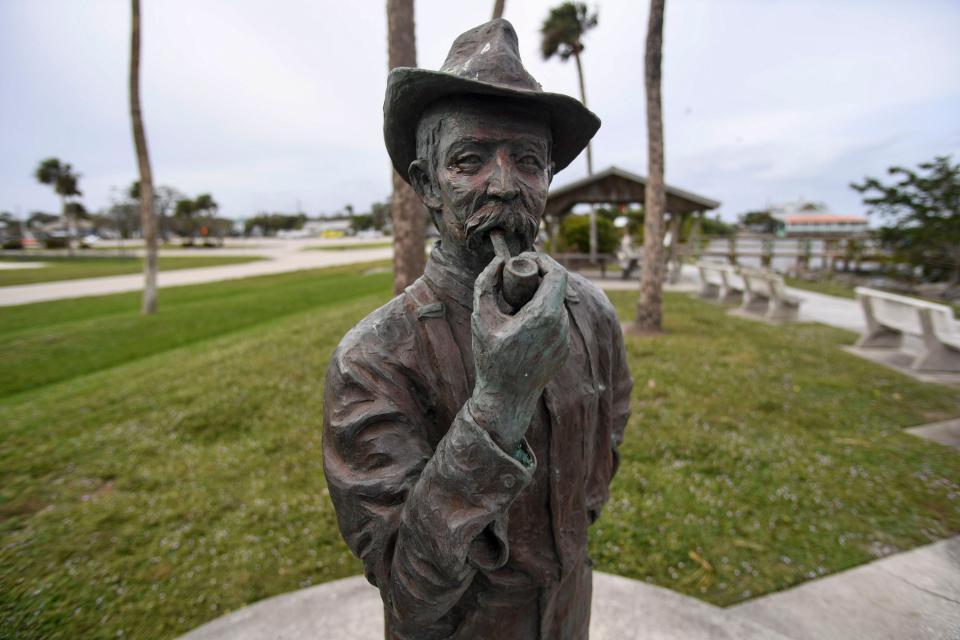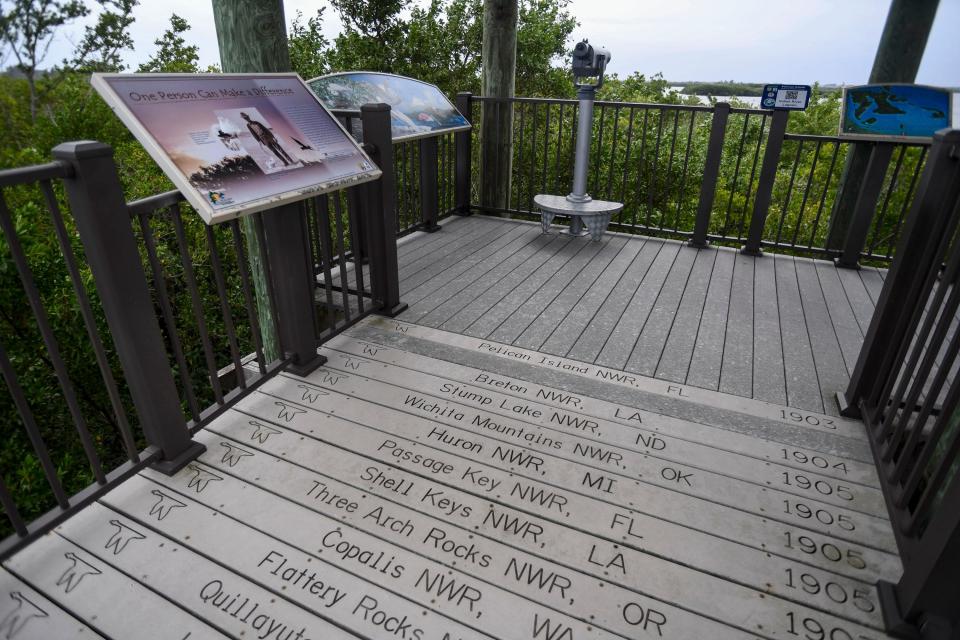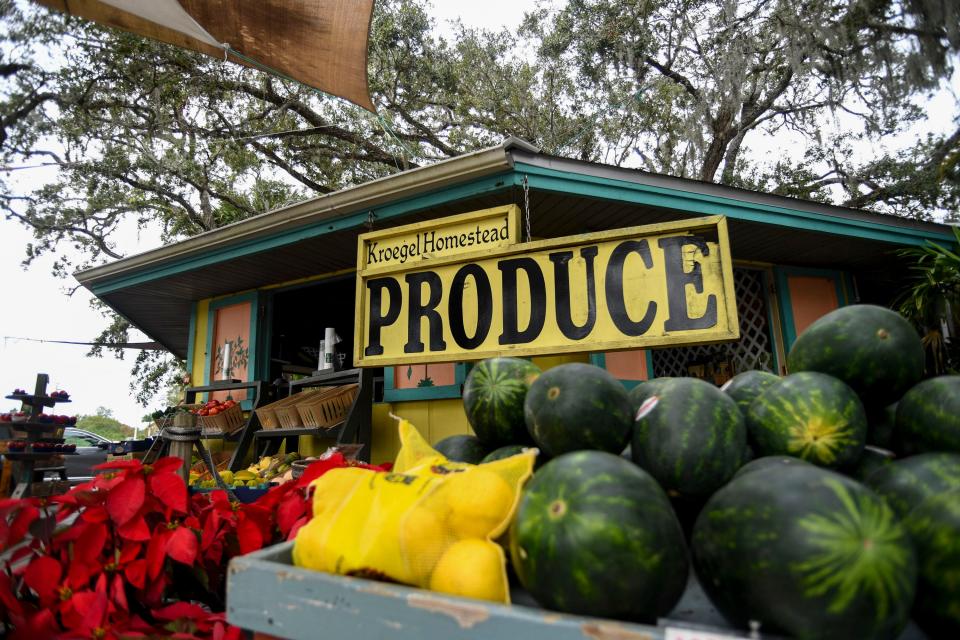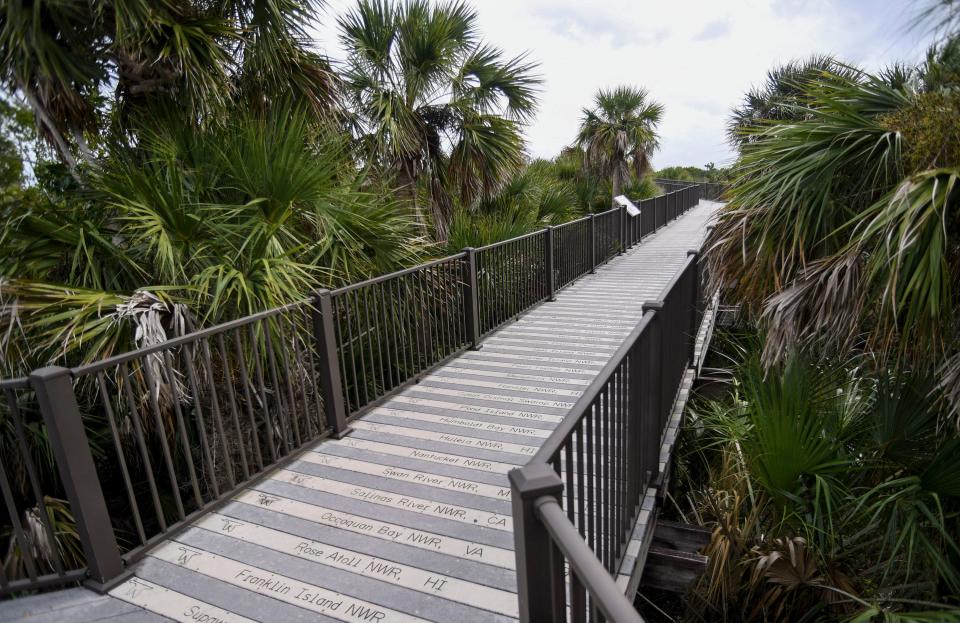First warden of wildlife refuge, Paul Kroegel, lives on through statue at Riverside Park
- Oops!Something went wrong.Please try again later.
SEBASTIAN — Overlooking the Indian River Lagoon at Riverview Park is a bronze figure, standing approximately 5 feet tall, smoking a pipe and surrounded by birds. The man has a mustache and is facing towards a small, 3-acre island. His face is curious, focused and unwavering.
The statue was erected in 2003, created by local resident Rosalee Hume. She actually knew the subject from her childhood. Hume passed away in 2010.
In 1903 the subject became the first manager of what was to become Pelican Island National Wildlife Refuge, a position he held until 1926. He's now risen to almost mythical status and become well known throughout Indian River County: Paul Kroegel.
"He is an example of an early pioneer who came to the area and made a difference," said county Historian Ruth Stanbridge. "More than 150 years later his presence is still felt."
The man

Kroegel's story begins in the less-tropical climate of Chemnitz, Germany in 1864.
Around the age of 17, he and his father immigrated to the Sunshine State and settled on a shell midden. It's where he saw his first glimpses of the area that would become his legacy — Pelican Island.
The mustache-clad young man made an early name for himself as a boat builder.
Around the turn of the 20th century, feathered hats were all the rage. During a period of Florida history known as the Feather Wars, hunters killed pelicans, egrets, herons and spoonbills to sell their feathers. Kroegel could hear the gunshots from his homestead.
"Snowbirds would come down on boats, as well as the plume hunters, and take potshots at the birds on the island," said Stanbridge. "Anything that moved they would shoot indiscriminately. So Paul would just take his boat and go out there with his shotgun and just patrol the island."

Some of the snowbirds were vehemently against plume hunting, including one Frank Chapman. Chapman was an ornithologist and curator of the American Museum of Natural History. He brought Kroegel's story back to Washington, D.C., where it eventually gained the ear of President Theodore Roosevelt.
On March 14, 1903, Roosevelt signed an executive order creating Pelican Island National Wildlife Refuge. Two weeks later, Kroegel was appointed the first wildlife refuge warden in the United States.
"Roosevelt only wrote six lines creating Pelican Island," said Stanbridge. "By the time he left office he would create more than 50 more. However, while Teddy was a conservationist, he never ever made it down to Sebastian. He never visited."

Despite, going down in history, Kroegel is described as down to Earth.
"He was a very gentile man, and a renowned boat builder," said Stanbridge. "It seemed like he could talk to pelicans, he would pet them. He also raised bees at his homestead. During the Feather Wars, one of his fellow wardens, Guy Bradley, was killed in the Everglades and Kroegel actually built the boat he was in when he died. That boat was sent back to Paul."
He also had a clever side.
"After it became a wildlife refuge, the government sent down a flag to put on the island," said Stanbridge. "Instead, he put it on his dock on the opposite side of the lagoon. So instead of shooting at the island, passersby would salute the flag and ignore the birds."
The statue
Knowing the centennial of Pelican Island was approaching, Hume set out to pay homage to the man she knew.
"She began by creating a clay model," said Stanbridge. "Then everyone went out and secured funding. Originally, she wanted to put it on the original Kroegel homestead, but the family still lived there, so it found its home at Riverview Park, and its perfect."
The statue was placed facing the 3-acre island so that Kroegel could permanently watch over his beloved birds and it could be finished well before the centennial. More than 200,000 people flocked to the city for the centennial in 2003.

The statue's inscription reads, "One person can make a difference."
"Paul made a difference by doing what he thought was right," said Stanbridge. "We still say that to volunteers at Pelican Island. Just because you think you cannot make a difference doesn't mean you can't. Paul was one man who did."
Nick Slater is TCPalm’s Indian River County Watchdog reporter. You can reach him at Nick.Slater@tcpalm.com and 224-830-2875.
This article originally appeared on Treasure Coast Newspapers: Paul Kroegel statue in Sebastian turns 20 this year, honors first warden

